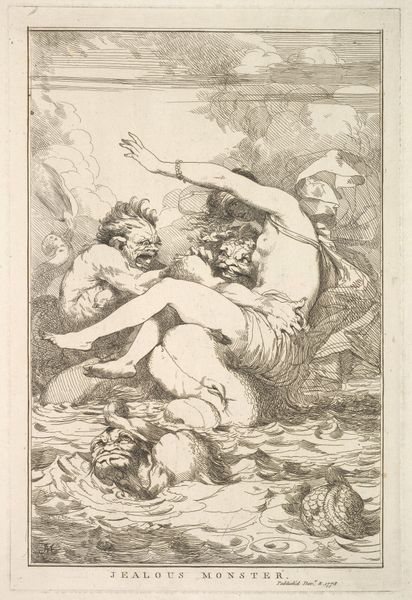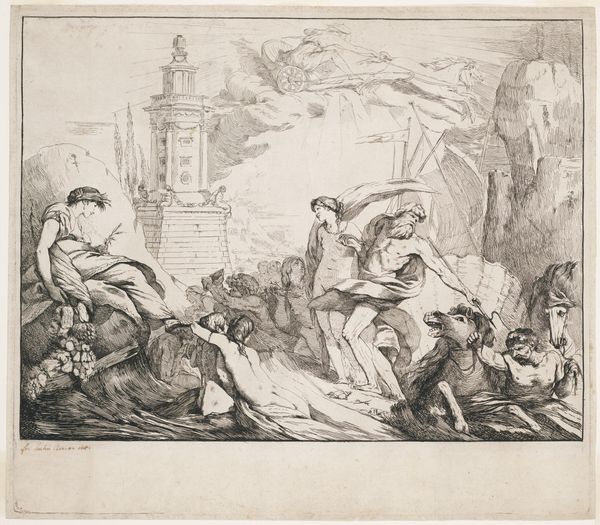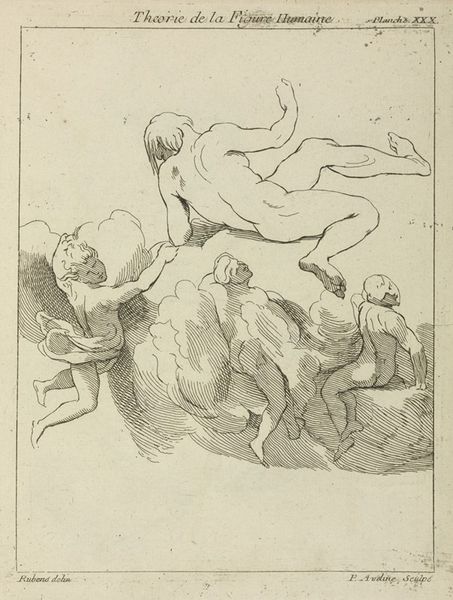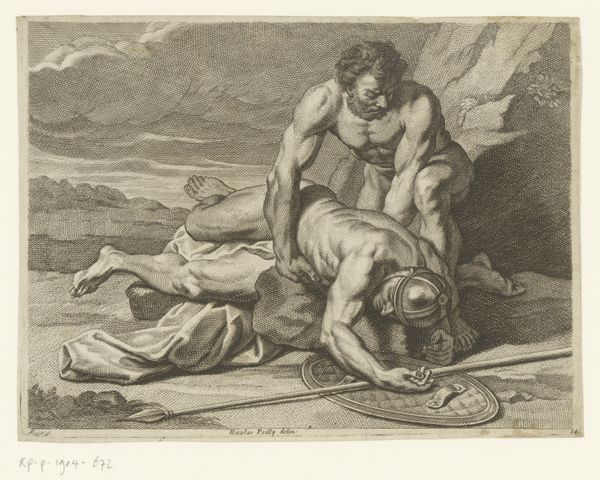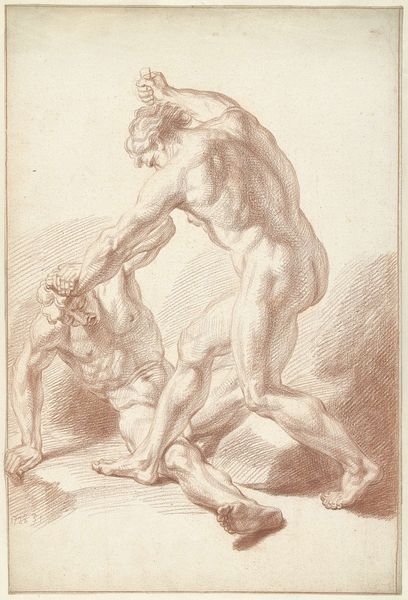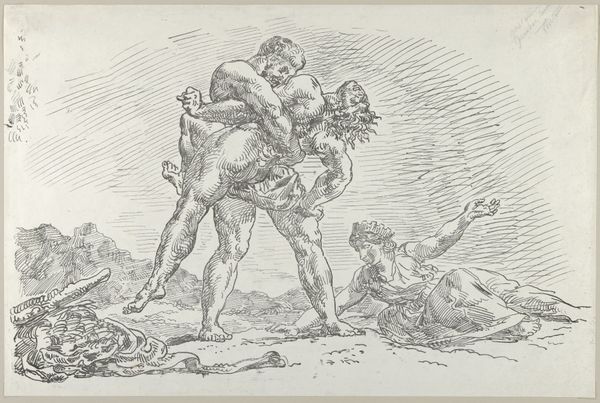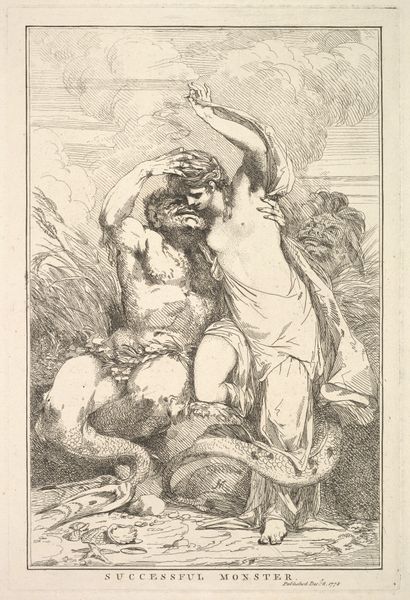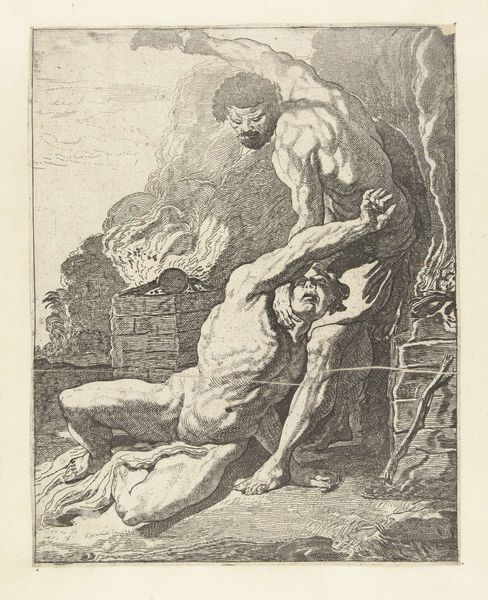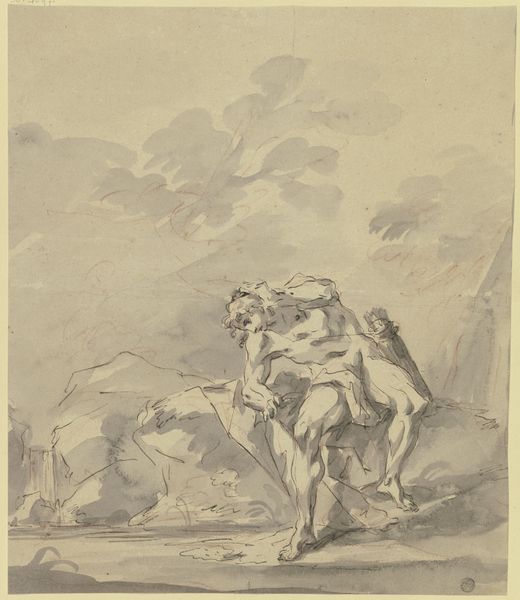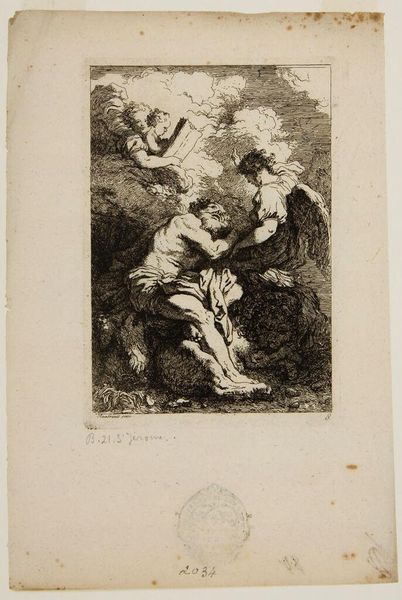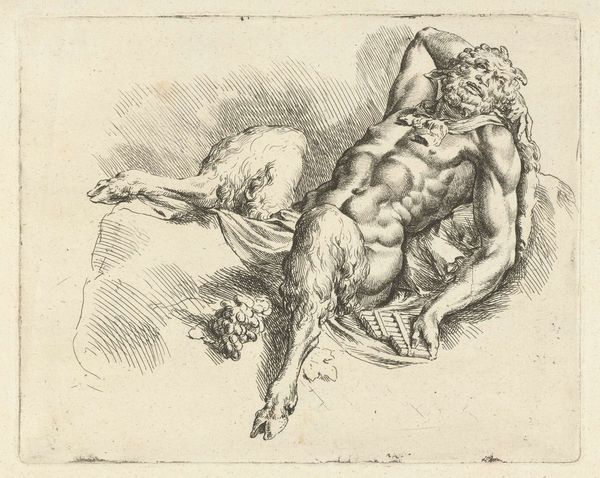
Hercules and Cacus, after Annibale Carracci, and the Destruction of Enceladus, after Agostino Carracci 1761
0:00
0:00
drawing, pencil, graphite
#
drawing
#
ink drawing
#
allegory
#
pencil sketch
#
figuration
#
pencil
#
graphite
#
history-painting
#
academic-art
#
nude
Copyright: Public Domain: Artvee
Jean-Honoré Fragonard made this drawing after Annibale and Agostino Carracci, capturing scenes rife with symbolic weight. On the left, we see Hercules, his club raised, triumphing over Cacus, a monstrous fire-breathing giant. The club, a symbol of brute strength and divine will, is about to crush the last vestiges of Cacus's rebellion. The motif of the vanquisher standing over the vanquished has roots stretching back to antiquity, seen in depictions of Roman emperors and Greek gods. This posture transcends mere victory; it embodies the conquest of chaos by order. To the right, the destruction of Enceladus echoes this theme. Enceladus, one of the giants who dared to challenge the Olympian gods, is crushed by a massive rock. His writhing form conveys the agony of defeat, a visceral representation of the consequences of challenging divine authority. This struggle taps into our collective memory, reminding us that hubris always precedes a fall. Thus, these figures resonate with viewers across time.
Comments
No comments
Be the first to comment and join the conversation on the ultimate creative platform.
